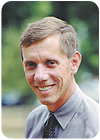
Maybe it’s the balmy winter weather up north that has softened New York City’s cold edge.
First, a 50-year-old construction worker leaves his two young daughters on a subway platform and dives in front of a train to rescue a stranger who had suffered a seizure and fallen onto the tracks. He covers the stranger’s body with his own as the train rumbled mere inches overhead.
Then, not a week later, two men in the Bronx considering a deal on a used car look up and see a baby dangling from a fire escape four stories above the sidewalk. They run over and try to catch him, positioning themselves below, arms outstretched. The little boy falls, bounces off the chest of one of the men who’s knocked off balance, and then lands safely in the arms of the other man.
Even the most hardened Wall Street hedge fund manager was startled out of his workaholic ways.
How many fatalities prevented?
And it got me wondering: How many everyday heroes are found in the workplace? Certainly there are enough opportunities. Look at it this way: In 2005, there were 1,234,700 injury and illness cases serious enough to require days away from work recuperating, according to the Bureau of Labor Statistics. That’s more than 3,000 a day. There were 255,750 cases involving falls. In how many of these cases did a coworker, supervisor or safety manager jump in and act without hesitation to prevent a serious injury from becoming a fatality?And how many times was a potential injury or death on the job simply chalked up as just another near-miss thanks to the quick actions of someone?
No one knows, for unlike the military, we seldom recognize heroic acts in the workplace.
And even in the military, with its training and traditions and bonds of brotherhood, you have to wonder why someone would act as Private First Class Jacklyn H. Lucas did on February, 20, 1945, on the island of Iwo Jima. Private Lucas and three other men were ambushed in a twisting ravine when two hand grenades landed directly in front of them. Private Lucas hurled over his comrades, fell atop one of the grenades, and pulled the other under him to shield his companions from the concussions and murderous shrapnel.
Seven Medals of Honor were posthumously awarded to Marines like Private Lucas who threw themselves on grenades during the battle for Iwo Jima.
Searching for answers
I read these accounts in the book, “Iwo Jima,” by Eric Hammel and published by Zenith Press in 2006, at a Barnes & Noble bookstore as I scouted around for answers about courage — certainly a useful trait for safety managers. Surprisingly, many of the leadership gurus have little or nothing to say about courage, the need for it or how to nurture it.You’d think courage might enter into one of the “life strategies” offered by Phillip C. McGraw in his 1999 book of the same name. The closest Doctor Phil comes is “Life Law Number 5: Life rewards action.” His strategy here: Make careful decisions, then pull the triggers. But safety emergencies allow no time for careful calculations.
You’d think courage would surface somewhere in “Social Intelligence,” by Daniel Goleman (2006); “Leading Minds - An Anatomy of Leadership,” by Howard Gardner (1995); “The Essential Drucker,” by Peter Drucker (2001); or “The 21 Irrefutable Laws of Leadership,” by John C. Maxwell (1998). But a search through the indexes of these books turned up not a mention of courage.
Certainly the formidable former CEO of General Electric, Jack Welch, had something to say about courage in his 2001 book, “Jack - Straight from the Gut.” Jack mentioned Katie Couric, but nothing about courage.
Two kinds of courage
An article in the January 2007 issue of the Harvard Business Review, “Courage as a skill,” by Kathleen Reardon did shed light on the subject. There is physical courage — acts of rescue and protection, and then there is political courage, which amounts to calculated risk-taking. When management leadership literature does take up the matter of courage, it describes behavior that is rarely impulsive and much more of a mental test. Stephen R. Covey, in his 1990 book, “Principle-Centered Leadership,” does reference courage — once — in terms of the courage it takes to listen with empathy. To Covey, it takes guts to hold back and let the other person talk, instead of rushing in with your own need to be understood.Safety and health managers can and do have experience with both types of courage. On the road, on a construction site, in a mine or on an assembly line you deal with fires, leaks, wrecks and malfunctions — emergencies requiring alertness, quick thinking, rapid assessments, poise, confidence and taking the initiative.
In the office, you can be confronted with evidence that audits are not acted upon, injuries are under-reported, maintenance is neglected, dangerous work conditions ignored, or employees reporting safety problems are intimidated and harassed.
Blowing the whistle in these cases calls for what author Reardon describes as the “courage calculation.” You need to factor in various considerations: What’s to be gained from stepping in or speaking up? What’s your goal? Is the battle worth fighting? Is now the right time to act? Should you wait longer? Do you have enough evidence, documentation? Assess your power base, leverage, and credibility. Are you emotionally and mentally prepared? What’s your Plan B?
More needs to be said about courage in the safety and health profession. What to do in a confined space emergency when there’s no time for calculation checklists, or when faced with a board room cover-up that puts your career at risk. And acts of workplace courage should be recognized and honored more than they are. It’s speculated one reason hard-boiled New Yorkers might be more willing to act courageously is the very public example set by 9/11 rescuers.